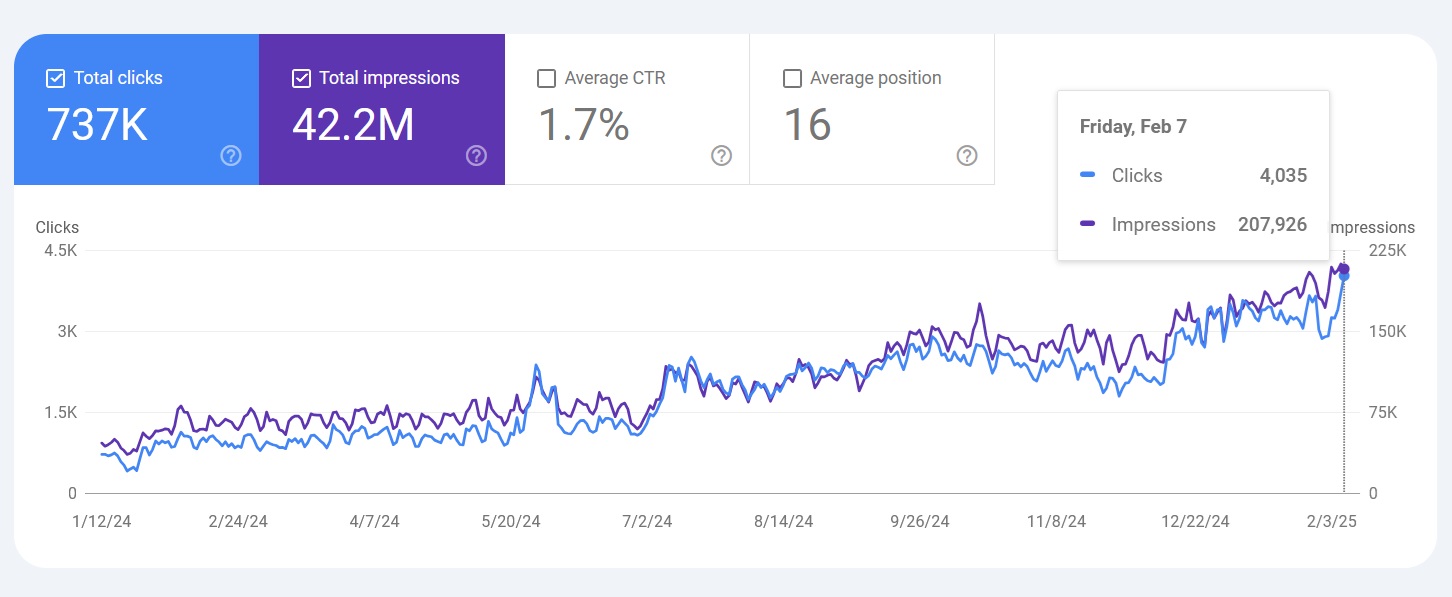Website Audit – How to Check Your Website’s Health

Much like an annual check-up with your PCP, a quick website audit uncovers hidden issues impacting your site’s performance with search engines, including the ability of your practice to show up on Google Maps. Doctors, dentists and therapists already know how competitive being in private practice can be, so why risk letting the health of your website lag so that new patients can’t find you online? By leveraging advanced SEO tools and creating magnetic moments through content, Patient Peak empowers your practice to achieve its peak visibility in the news, on Google, Bing and Alexa. It’s much less painful than a colonoscopy, but it can be just as thorough. Let me walk you through the steps.
How to Audit Websites For Flawless Performance
A thorough evaluation of a website involves checking how well it is communicating with the AI of Google and Bing that selects which websites get the top spots in search results. A healthier site with a score of 92% or better is 100 times more likely to win the top spots on search engines than a neglected site. At Patient Peak, we check the speed, structure, functionality of every aspect of your website to ensure that you beat your competitors in your online visibility.
Measuring the Wellness of Your Online Platform
Regular check-ups on a website’s health help uncover issues that may not be immediately obvious. For example, problems with photos or videos loading can make people leave your site and search for another provider. A lack of labels on your content can prevent the AI that is crawling your site from understanding who you are and what you offer. For smaller websites, usually an annual check-up will keep you up to date with the evolving search engine standards. However, medium sized websites of 100 pages or more should consider quarterly audits because the more pages you have, the more opportunities for something to go wrong with loading content, videos, and photos.
We also check to see which websites are linking to you, which is called backlinks, because when high authority sites like news sites link to you, this raises the authority of your site. A higher authority site will win over lower authority sites. At Patient Peak, we do quarterly SEO press releases to build up high quality backlinks that keep your practice in the top spots on the search and news tabs of Google, Yahoo News, and Bing.
A quick checklist for website wellness:
| Factor | What to Check |
| Backlink Quality | Source, authority, and anchor text |
| User Experience | Navigation, responsiveness, load speed |
| On-Page Elements | Metadata, headings, content accuracy |
| Legal Compliance | Privacy policy, terms, security |
Elements Included in a Site Inspection
Each website audit can be tailored to specific goals, but often includes several core components:
- Competitor Benchmarking: Reviewing rival sites helps reveal opportunities and shortcomings.
- Analysis of Inbound Links: Evaluating external links highlights the influence on search rankings.
- Conversion Funnel Assessment: Studying how users move through key pages uncovers friction points.
- Social Media Presence Review: Ensuring messaging and branding are consistent across platforms and maximizes social impact.
- Technical and Content Check: Inspecting keyword targeting, structure, page speed, and metadata supports healthy SEO.
- Privacy and Data Management: Checking compliance with data guidelines helps maintain trust and legal standing.
A site audit that covers these areas can reveal how well the platform turns visitors into leads, ensures compliance, and stays ahead in its niche.
Recommended Tools and Audit Techniques
Modern site evaluations rely heavily on digital tools to speed up and refine the process. Solutions such as automated crawlers, SEO analyzers, and social listening platforms are vital. These applications can generate reports detailing errors, performance bottlenecks, backlink status, and technical shortcomings.
Popular practices also include benchmarking against direct competitors, analyzing user flows with heatmaps, and checking compliance with the latest privacy requirements. By applying these tools, organizations can make data-driven decisions that keep their websites robust, discoverable, and compliant with evolving standards.
A regular schedule for these technical and strategic evaluations ensures ongoing improvements, keeping the site efficient, engaging, and well-optimized for both visitors and search engines.
How Websites Lose Their Edge Over Time
Ongoing Care Keeps Sites Effective for Patient Recruitment
Consistent website maintenance acts much like a regular health checkup for digital assets involved in patient recruiting. Without ongoing updates, outdated content or old technology can create hurdles that discourage potential applicants. Proactive care includes updating medical information, ensuring forms are user-friendly, and removing broken links. Regular site checks also help catch minor issues before they become barriers to engagement or compliance problems.
A routine maintenance checklist could include:
- Refreshing key content and eligibility details
- Testing registration workflows
- Verifying contact forms and chat tools
- Reviewing legal disclaimers for accuracy
- Checking accessibility for all users
Maintenance, when performed on schedule, ensures a trustworthy and seamless experience for potential patients, giving organizations an advantage in the highly competitive recruitment landscape.
How Search Engine Experts Raise a Site’s Search Profile
SEO specialists focus on making sure a website is easy for Google, Bing, and other search engines to understand and recommend. They use a blend of strategies, including refining keywords, improving internal linking, and enhancing site speed. Clear meta descriptions and structured data help communicate context to search engines, boosting the chances for higher rankings.
Key actions an SEO might take:
| Area | Optimization Focus |
| Keywords | Research and place search-friendly terms |
| Page Structure | Use headings, bullet points, and short paragraphs |
| Technical Elements | Enhance speed, mobile usability, sitemaps |
| Backlinks | Build quality links from reputable sites |
| Analytics | Monitor visitor data and measure gains |
Together, these optimization efforts keep a website visible, competitive, and positioned for growth as it ages.
Key Advantages of Routine Website Assessments
Evaluating Competing Sites for Strategic Advantage
Conducting a thorough analysis of competitor websites enables organizations to better understand trends, identify market gaps, and locate practices that contribute to others’ successes. This process highlights opportunities for differentiation and areas requiring improvement, ensuring that a site remains competitive.
A clear understanding of strengths and weaknesses, both internal and external, allows website owners to make informed decisions using actionable data for sustained growth.
Key Points:
- Pinpoints successful strategies adopted by competitors
- Reveals areas where the site may fall behind
- Uncovers untapped opportunities within the market
| Benefit | Impact on Your Site |
|---|---|
| Identify best practices | Boosts site effectiveness and efficiency |
| Spot market gaps | Encourages innovative content and features |
| Benchmark performance | Enables measurable, data-driven improvements |
Strengthening Your Website’s Visibility and Image in Search
A robust SEO health checkup ensures that all aspects affecting a site’s search presence and branding are optimized. Reviewing keyword use, metadata, page speed, and content quality improves both visibility and user trust.
With heightened attention to branding, a site becomes more recognizable and trustworthy to new and returning visitors a like.
Key Actions:
- Ensure content is relevant and up-to-date
- Confirm that keyword strategies align with target audiences
- Optimize site structure for fast, user-friendly navigation
Tip: Use feedback from ongoing audits to adjust branding and messaging, supporting both discoverability in search engines and a consistent user experience. Regular improvements based on audit results help maintain authority and relevance within the industry.
Addressing Website Issues for Better SEO
Varieties of Website Reviews
A comprehensive website review can take several forms, each designed to uncover a unique set of strengths and weaknesses.
Competitor site comparison helps spot effective tactics and avoid common pitfalls by learning from others in the industry.
Inbound link analysis assesses which external sites point to your domain, shaping search visibility and credibility.
Reviewing conversion pathways allows a business to find opportunities for streamlining the user journey to maximize lead generation or sales.
An assessment of social reach checks whether social media efforts are successfully directing visitors to the site and maintaining brand consistency.
A full-scale SEO investigation inspects everything from page structure and keyword application to technical configurations and user experience.
Finally, privacy and compliance checks confirm that data collection practices align with current regulations, protecting the business and fostering user trust.
Applying Audit Insights for Stronger SEO and User Outcomes
Determining what to improve is only the first step—implementing the findings of a website review is where real progress is made.
Begin by adopting valuable lessons from competitor strategies, integrating leading features, and refining weaknesses that could deter potential customers.
A structured link audit should evaluate every backlink for relevance and authority, removing or disavowing harmful links to boost rankings.
Content must be updated and aligned with users’ needs as well as relevant keywords, striking a balance between engagement and SEO best practices.
Analyzing conversion points, such as checkout pages and sign-up forms, supports frictionless interactions that help drive conversions.
Social profiles warrant regular review, with cross-channel branding and content updates to funnel more users to the main website.
Finally, optimizing on-page elements like keywords, meta tags, and titles ensures the site’s visibility remains strong in search results.
Step-by-Step Website Assessment Table
An organized checklist simplifies the ongoing process of solving website errors and boosting performance:
| Audit Area | Key Actions |
| User Experience & Structure | Test navigation and site layout for intuitiveness |
| Site Speed | Evaluate loading times and reduce bottlenecks |
| Content Health | Check for outdated or missing content; update frequently |
| Link Integrity | Review internal and external links for accuracy and value |
| Conversion Optimization | Inspect forms, buttons, and CTAs for clarity and functionality |
| Technical Soundness | Scan for code errors and security flaws |
| Compliance & Policy Updates | Refresh privacy and legal policies as regulations evolve |
Tip: Regularly work through this table to keep site health and SEO performance high.
Leveraging Website Analysis for SEO Growth
Incorporating website review tools and methodologies leads to valuable, actionable data.
Utilizing technical crawlers, backlink analyzers, and page audit platforms can quickly uncover problems such as broken links, slow-loading scripts, or gaps in keyword optimization.
When acted upon, these findings result in higher search rankings, smoother user journeys, and improved legal compliance.
Continuous review and adjustment, using the latest technology and best practices, position a website ahead of competitors and ready to capitalize on new market opportunities.
What Is the Price Range for a Website Evaluation?
Website audit prices can vary greatly due to factors such as the total number of pages, level of expertise of the agency, and how soon a company needs results. Understanding these details allows stakeholders to allocate realistic budgets that fit the demands of their digital presence.
For small to medium websites, fees typically range from several hundred to a few thousand dollars. These audits generally focus on vital elements such as technical health, on-page SEO, and key usability features. Agencies with proven know-how often command higher rates, but experienced professionals may uncover valuable opportunities for growth.
Larger websites—including e-commerce or enterprise-level sites—require more extensive reviews, with audit costs reaching from $8,000 to $30,000 or higher. These thorough assessments can delve into site architecture, comprehensive content checks, and in-depth technical analyses, reflecting the complexity and scale of such projects. The urgency of the audit can also drive prices up, particularly if expedited services are needed.
Website Audit Fees by Page Count
A useful way to estimate costs is by examining the number of web pages needing review. See the table below for typical price brackets based on page quantity:
| Number of Pages | Estimated Audit Fee |
| 1–10 | $300 – $1,000 |
| 11–50 | $1,000 – $2,500 |
| 51–200 | $2,500 – $8,000 |
| 201–1,000 | $8,000 – $30,000+ |
These figures are approximate, as complexity, agency reputation, and service type can lead to higher or lower costs within each range. Companies should communicate their objectives and site details clearly to receive tailored estimates for the most effective audit investment.
Website Audit Tools for SEO Optimization
How Often Should Websites Undergo Professional Audits
Routine audits are a cornerstone of ongoing SEO health. Many experts recommend a schedule of audits every 4 to 6 months, while high-traffic sites or rapidly changing industries may benefit from monthly reviews. Frequency depends on several factors, including website size, the pace of updates, and competitive landscape.
Audit intervals can be organized in a table for clarity:
| Website Type | Audit Frequency |
| Small/Static | Every 6-12 months |
| Medium/Active | Every 4-6 months |
| Large/High-Volume | Monthly or Quarterly |
More frequent audits can identify issues before they impact search rankings or user experience. Timely identification of problems, coupled with prompt remediation, reduces risks and ensures the site continues meeting both user and search engine standards.
Selecting SEO Audit Experts and Their Toolbox
Choosing the right specialist or agency is essential for an effective audit. They should have up-to-date experience with both manual evaluations and advanced software solutions. The most reputable professionals combine knowledge of technical SEO, user experience, analytics, and compliance.
Qualities to look for in an SEO auditor include:
- Broad Technical Understanding: They should handle all aspects, from crawl errors to metadata.
- Experience With Diverse Tools: Familiarity with platforms such as Semrush, Ahrefs, Screaming Frog, and Google Analytics.
- Communication Skills: Clear reporting and actionable recommendations are vital.
- Reputation and Track Record: Client testimonials and case studies offer assurance.
Some common tools used by professionals:
| Audit Focus | Common Tools Used |
| Technical Site Analysis | Screaming Frog, Google Search Console |
| Backlink Review | Ahrefs, Moz Link Explorer |
| On-Page SEO | Semrush, SEOptimer, AIOSEO Analyzer |
| Performance Assessment | Google PageSpeed Insights, GTmetrix |
| Compliance Evaluation | Privacy Policy Generators, ADA Checkers |
Combining automated scans with expert review enables a more comprehensive and precise analysis. The right consultant doesn’t just find issues—they prioritize fixes according to real business impact.
Influence of Audits on Organic Search Visibility
Routine audits have a measurable effect on a website’s visibility in search results. Detecting and resolving technical errors, streamlining site structure, and updating keyword strategies all contribute to higher rankings. Audits also highlight content gaps, underutilized pages, and obstacles to crawling or indexing.
Key ways audits improve ranking potential:
- Technical Fixes: Repairing broken links and optimizing site performance can lead to faster crawling and better indexation.
- Content Refinement: Targeted keyword optimization and metadata updates enhance relevancy for searches.
- User Experience: Addressing navigation and layout issues helps boost engagement metrics, which search engines consider when ranking.
- Backlink Profile: Identifying harmful inbound links minimizes penalties, while promoting quality links improves authority.
- Compliance and Trust: Adhering to privacy and accessibility standards increases site credibility in the eyes of users and search engines.
A consistent auditing approach, paired with timely improvements, supports sustained search growth and robust digital presence. Tracking these changes over time using analytics ensures that each modification delivers measurable results.
By leveraging both established and innovative tools, organizations can ensure their websites remain competitive within evolving digital landscapes.
New Patient Hub
Transform Your Website Into a Patient Recruiting Hub with SEO Branding
Marketing for Doctors
Our Monthly Marketing Packages – Silver & Gold SEO + Press + Social Media
Content Creation
Broadcast Your Voice Through Content – Attract the Right Patients
Marketing for Therapists
Our Monthly Marketing Packages – Silver & Gold SEO + Press + Social Media
SEO Press Release
Raise the Prestige of Your Practice and Win Top Spots on Google/Bing
Marketing for Dentists
Our Monthly Marketing Packages – Silver & Gold SEO + Press + Social Media
Frequently Asked Questions
How Much Time Does SEO Usually Require?
SEO is a long-term strategy. Most websites may start to notice improvements within 3 to 6 months, but significant results often require ongoing work over several months or even a year. Factors impacting this timeline include competition, website structure, and the quality of ongoing optimization.
Main Elements Included in a Thorough Website Audit
A comprehensive website audit covers multiple aspects, such as:
- Technical Issues (e.g., broken links, page speed, mobile responsiveness)
- On-Page SEO (e.g., meta tags, keyword use, content quality)
- Off-Page SEO (e.g., backlinks, domain authority)
- User Experience (e.g., navigation, design consistency)
- Analytics Review (e.g., traffic sources, conversion tracking)
Methods for Completing an SEO Audit to Boost Rankings
A practical approach to auditing for SEO includes:
- Checking website health with a site crawl
- Analyzing keyword targeting and content quality
- Reviewing mobile usability and site speed
- Evaluating internal linking and navigation
- Inspecting backlink profiles and off-page factors
Taking these steps helps reveal and fix barriers to higher search rankings.
Essential Tools for an Extensive Website Checkup
Effective audits often use a combination of:
- Google Search Console
- Google Analytics
- Screaming Frog SEO Spider
- SEMrush or Ahrefs
- PageSpeed Insights
These tools help uncover technical errors, content gaps, performance bottlenecks, and opportunities for improvement.
Recommended Audit Frequency for Peak Website Performance
Conducting a website audit every six months is generally advisable. However, sites that make frequent updates or operate in competitive markets should consider quarterly reviews. Regular audits help identify emerging issues and capitalize on SEO opportunities.
Key Steps for a DIY Website Audit Checklist
A basic self-audit should include:
- Ensuring all pages are indexed correctly
- Checking for broken links and missing images
- Reviewing meta titles and descriptions
- Testing site speed and mobile friendliness
- Assessing content accuracy and relevance
- Validating security settings (SSL)
Using a checklist streamlines the process and ensures nothing important is missed.
Ways a Website Audit Can Elevate User Experience and Engagement
A well-executed audit identifies problems that frustrate visitors, such as slow loading times, confusing navigation, and outdated content. Fixing these issues creates a smoother journey, makes information easier to find, and builds trust, all of which encourage users to engage more and stay longer on the site.
Our Portfolio
Review Our Case Study Results!
Learn about our SEO case studies of our healthcare practices that have raised their website traffic by over 5000% and increased their new patient appointment requests through their websites by over 700%. Could your use an extra 200 patient requests a month?
Read Next
Starting a Private Practice for Therapists: Your Step by Step Guide
Launching a successful therapy private practice starts with more than just professional expertise and strong word of mouth. The foundation of building a practice is creating a strong, recognizable...
Recent Google Algorithm Updates for Website SEO
Staying ahead in Google search results is crucial for healthcare practitioners—especially doctors, therapists, and dentists—who want to attract new patients online. At Patient Peak, we know that...
Solopreneurs: The Online Practice Revolution
It’s a growing movement. Solopreneurs are entrepreneurs that create successful businesses without managing a huge team of people. With the right amount of outsourcing, they can offer a unique...
SEO for Dentists
Competition to get found on Google has become fierce, making SEO for Dentists the foundation of your digital marketing plan. When your website doesn’t communicate clearly with search engines, your...

George Hunter
Director of Patient Peak
George Hunter is an SEO Content Creator and Marketing Innovator that serves as an advocate for doctors, therapists, and medical practices. He sees how much our clinicians sacrifice for the well-being of our communities, which motivates him to create content that connects medical practices with the right new patients. A renaissance men, Hunter writes blogs, books, Medium articles and SEO press releases that consistently arrive in the top search results of Google and Bing. In his free time, he creates documentaries for PBS and Amazon Prime. With this unique combination of talents, George Hunter offers the most captivating marketing campaigns available to healthcare providers anywhere.





